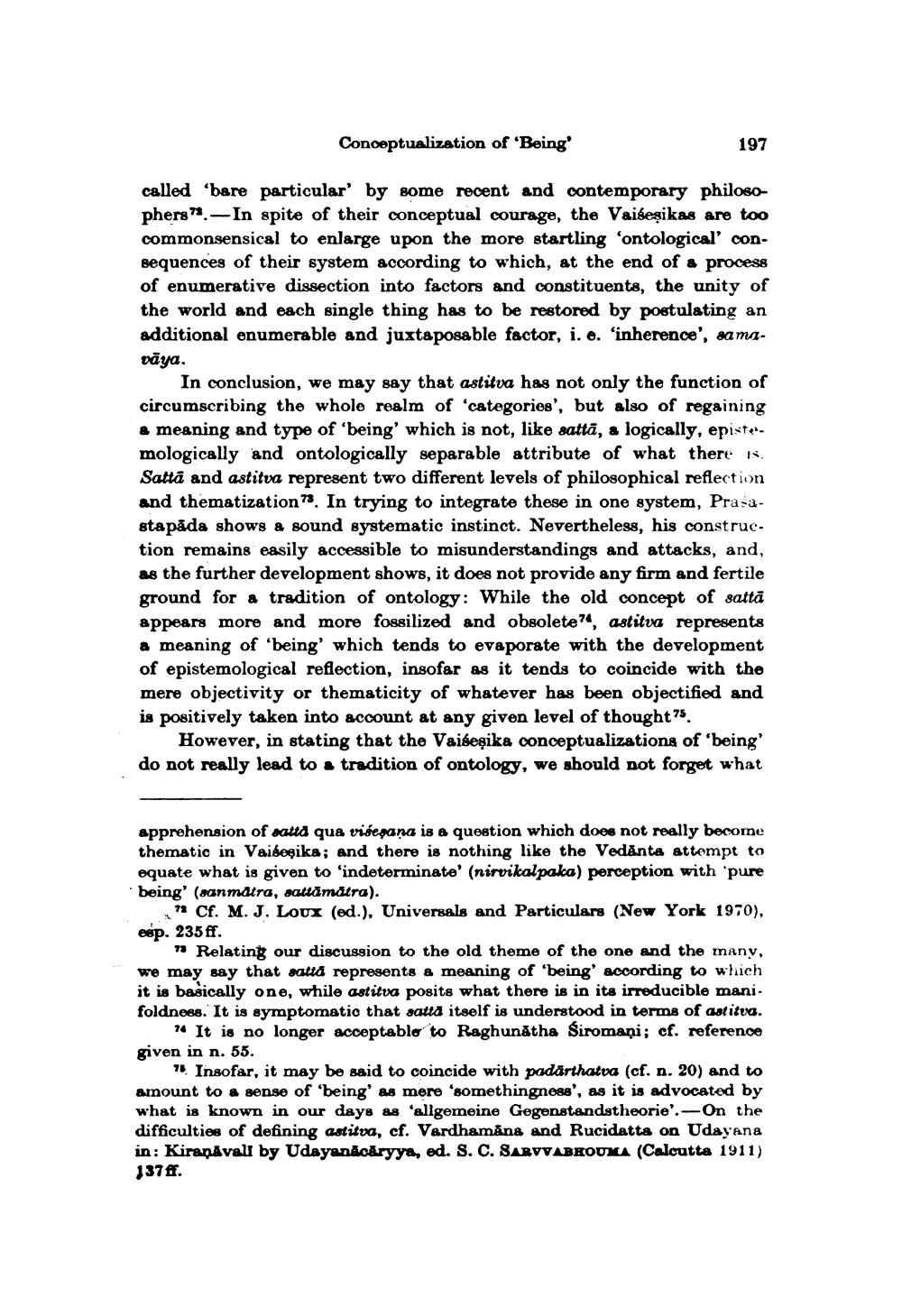________________
Conceptualization of 'Being'
called 'bare particular' by some recent and contemporary philosophers".-In spite of their conceptual courage, the Vaiseṣikas are too commonsensical to enlarge upon the more startling 'ontological' consequences of their system according to which, at the end of a process of enumerative dissection into factors and constituents, the unity of the world and each single thing has to be restored by postulating an additional enumerable and juxtaposable factor, i. e. 'inherence', samavāya.
197
In conclusion, we may say that astitva has not only the function of circumscribing the whole realm of 'categories', but also of regaining a meaning and type of 'being' which is not, like sattā, a logically, epistemologically and ontologically separable attribute of what there is. Satta and astitva represent two different levels of philosophical reflection and thematization". In trying to integrate these in one system, Prasastapāda shows a sound systematic instinct. Nevertheless, his construction remains easily accessible to misunderstandings and attacks, and, as the further development shows, it does not provide any firm and fertile ground for a tradition of ontology: While the old concept of sattā appears more and more fossilized and obsolete", astitva represents a meaning of 'being' which tends to evaporate with the development of epistemological reflection, insofar as it tends to coincide with the mere objectivity or thematicity of whatever has been objectified and is positively taken into account at any given level of thought75.
However, in stating that the Vaisesika conceptualizations of 'being' do not really lead to a tradition of ontology, we should not forget what
apprehension of satta qua visegana is a question which does not really become thematic in Vaisesika; and there is nothing like the Vedanta attempt to equate what is given to 'indeterminate' (nirvikalpaka) perception with 'pure being' (sanmatra, sattämätra).
7 Cf. M. J. Loux (ed.), Universals and Particulars (New York 1970), esp. 235 ff.
"Relating our discussion to the old theme of the one and the many, we may say that satta represents a meaning of 'being' according to which it is basically one, while astitva posits what there is in its irreducible mani. foldness. It is symptomatic that satta itself is understood in terms of astitva.
74 It is no longer acceptable to Raghunatha Siromani; cf. reference given in n. 55.
" Insofar, it may be said to coincide with padarthatva (cf. n. 20) and to amount to a sense of 'being' as mere 'somethingness', as it is advocated by what is known in our days as 'allgemeine Gegenstandstheorie'.-On the difficulties of defining astitva, cf. Vardhamana and Rucidatta on Udayana in: Kiranavall by Udayanacaryya, ed. S. C. SARVVABHOUMA (Calcutta 1911) 137ff.




